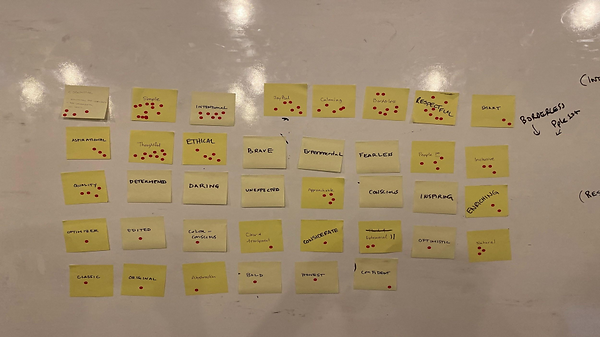Hi there
I'm Carly. I'm a UX strategist and content designer.
My specialities are UX writing, software documentation, release notes, and product content.
I design through the written word to create experiences that resonate.

VOICE, TONE, AND STYLE
Finding true North
Creatives at North needed better guidelines to help them design. Myself, marketing, UX, and Industrial Design got together to align on North's design tenets: principles that are specific to creating and designing at North. The result? 5 tenets:
Simple, Intentional, Respectful, Fearless, Imaginative
My Roles:
Content Strategist
Copywriter
Customer Advocate
SUMMARY
I used our design tenets to inspire and build our voice and tone guidelines from scratch. Voice and tone are about so much more than just a one-paragraph description, so I expanded the guide to include sections on everything from vocabulary to punctuation. By including live examples of voice in action as well as a voice scorecard, I made the often difficult practice of writing on-brand easier for everyone across the organization.
Designing together
From emails to our product UI, North’s digital presence appeared disjointed. Nothing we created felt like it was true North.
We needed better guidelines—not just flashy brand guidelines—to help inform our design decisions. Creative and design teams across the organization decided to get together and come up with design tenets. Armed with these tenets, our hope was that we could create more consistency and make creative teams accountable (as well as less siloed).


A appointment email (marketing) compared to UI text (UX). Notice the differences in voice:
Direct, to-the-point message vs. Playful and descriptive blurb
Finding our tenets
Our first design tenet assignment: create our own mood boards. The North brand manifested differently for all of us, so it was important to share what we felt was quintessentially North.
.png)

From here, we shared our mood boards with the larger group and started to ideate words for preliminary tenets. We repeated this ideation process a few times—combining similar words under one category—and voted on our favourites.

At this point, things got a bit repetitive. We were spinning our tires going through multiple rounds of words, so we decided to pick just 5 words that we resonated with and define what they mean to our design process. This was extremely productive and allowed us to get towards our finalists:
Simple, Intentional, Respectful, Fearless, Imaginative
Tenets in action
Our next step: solidifying what these tenets meant for our respective disciplines. As the content strategist and word master at North, this meant creating new-and-improved style guidelines. Our previous guidelines were vague and never touched on grammar, punctuation, or even our stance on sentence vs. title case—all things that seasoned writers are eager to know.
I saw this as an opportunity to use Torrey Podmajersky’s approach to voice and tone in UX writing. In her book Strategic Writing for UX, Podmajersky outlines how to devise a voice chart to inform content decisions. I love this approach because it gives writers enough structure to write on-brand while simultaneously giving them a way to measure voice and tone effectiveness.
I used the design tenets as our brand principles and explained how each measure of voice—vocabulary, verbosity, grammar, capitalization, and punctuation—applied to their respective tenets. Chock full of examples, I made it as engaging and relevant to North and Focals as I could.
.png)
A before-and-after example of app content with the new voice and design principles applied.
The scorecard in this guide is perhaps the most useful in gauging voice. It’s helped me edit marketing copy and my own content so that it sounds undeniably North. Think of it like a teacher’s rubric for product content. It gives poignant, actionable feedback and highlights the voice aspects that are lacking or used incorrectly.

Lessons learned
We won’t sound like a unified voice if we don’t come together. No matter how we design—whether it’s with words or mechanical engineering—we’re all designers and create at North. By making informed content design decisions, we’re helping our customers understand who we are and where we come from. Our visuals, language, and industrial design should always feel like it came from North.